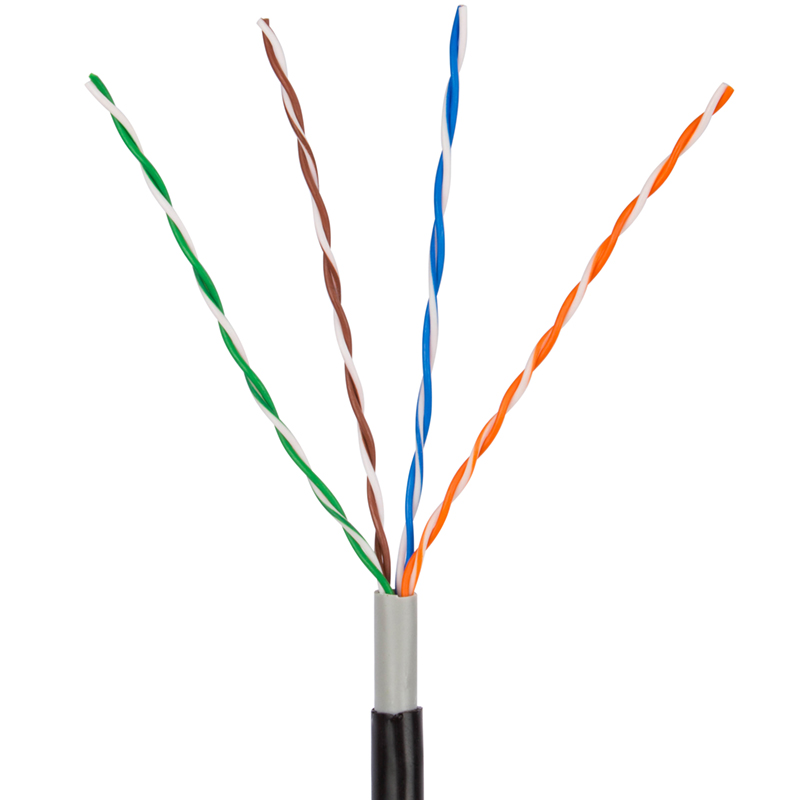If you’ve ever shopped for a home network, there’s a good chance you’ve heard of Ethernet cables. But what are they for, why would you use them, and how are they different?
A reliable network connection
An Ethernet cable is the cable you connect between your computer, TV, game console, or other device and your router, modem, or network switch. It allows your device to access a local network or the internet. While Wi-Fi has become a very common way to connect to the internet, Ethernet cables can provide a faster, more stable internet connection than wireless currently offers.
Ethernet cables typically use RJ-45 connectors on both ends and can be up to 300 feet long. Additionally, there are no upstream or downstream ports in Ethernet cables, so you can plug either end into your router or computer.
As mentioned earlier, Ethernet cables are primarily used to access a local network or the internet. But you can also use them to create a direct connection between two devices.
How much better is Ethernet than Wi-Fi?
The speed of a wired connection depends on several factors, such as the speed of your router, the type of Ethernet cable (more on this later), and the capabilities of your devices. That said, most modern Ethernet connections are able to regularly deliver speeds of 1Gbps or more, which is faster than the average Wi-Fi connection or even Wi-Fi 6.
Additionally, since Ethernet cables offer a direct wired connection, you get a more reliable and consistent experience than Wi-Fi. You also don’t have to worry about the distance from your wireless router or obstacles in between.
Apart from speed and reliability, Ethernet cables also reduce latency in your connection, which is key, mainly when you’re playing online games.
Finally, Ethernet cables are also better than Wi-Fi in terms of network security and control. Since devices are connected using cables, it’s difficult for outsiders to access your network or its data without physical access.
Categories of Ethernet Cables
Just like any other technology, not all Ethernet cables are created equal. Instead, there are different categories, each with different levels of functionality and features, but primarily speed.
When looking for Ethernet cables, you may have noticed that they are labeled as Cat-5, Cat-5e, or Cat-6. The “Cat” here is short for Category, and the number represents the specifications it supports. Although there are cable categories from 1 to 4, they are either obsolete or not technically considered part of the Ethernet standard. This means you don’t have to worry about anything below Cat-5. Even Cat-5 itself is quite old and not recommended for any brand new installations, but you may still find it in circulation or in existing installations.
Category 5 (Cat-5) cables can support data transfer speeds up to 100Mbps and a bandwidth of 100MHz, but they do not have any shielding. The shielding helps protect the cable from electromagnetic interference from external sources.
Category 5e (Cat-5e) cables are an improved version of Cat-5. It is not an officially designated category, but Cat-5e cables can support speeds up to 1Gbps, 100MHz bandwidth, and have better immunity to crosstalk. Cat-5e is the most common Ethernet cable on the consumer market today.
Category 6 cables are a big step up compared to Cat-5e. While they are only rated for 1Gbps over longer distances, you can get up to 10Gbps over shorter distances of up to 37 meters (121 feet). This is possible because of better shielding and a higher bandwidth of 250MHz.
Category-6a is a more advanced version of the Cat-6 specification. It supports twice the bandwidth of Cat-6 and speeds up to 10Gbps at 500MHz, up to 100 meters.
Post time: Jul-17-2024








